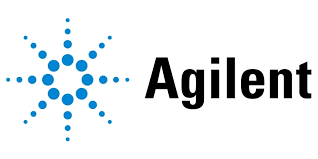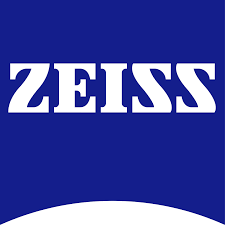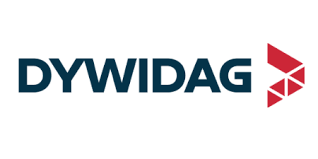Ai In Science
Published Date: 15 December 2025 | Report Code: ai-in-science
Ai In Science Market Size, Share, Industry Trends and Forecast to 2033
This comprehensive report on Ai In Science delves into market dynamics, growth insights, and key technological advancements projected for the period 2024 to 2033. It offers valuable data on market size, segmentation, regional trends, and industry challenges, equipping stakeholders with precise intelligence for strategic decision making.
| Metric | Value |
|---|---|
| Study Period | 2024 - 2033 |
| 2024 Market Size | $13.00 Billion |
| CAGR (2024-2033) | 10.2% |
| 2033 Market Size | $32.20 Billion |
| Top Companies | TechSci Innovations, NextGen AI Labs, InnoResearch Global, FusionTech Systems |
| Last Modified Date | 15 December 2025 |
Ai In Science (2024 - 2033)
Ai In Science Market Overview
Customize Ai In Science market research report
- ✔ Get in-depth analysis of Ai In Science market size, growth, and forecasts.
- ✔ Understand Ai In Science's regional dynamics and industry-specific trends.
- ✔ Identify potential applications, end-user demand, and growth segments in Ai In Science
What is the Market Size & CAGR of Ai In Science market in 2024?
Ai In Science Industry Analysis
Ai In Science Market Segmentation and Scope
Tell us your focus area and get a customized research report.
Ai In Science Market Analysis Report by Region
Europe Ai In Science:
Europe remains a significant contributor to the Ai In Science market, with established research institutions and a strong emphasis on regulatory compliance and ethical AI practices. The market in this region is projected to grow from US$4.00 units in 2024 to US$9.90 units in 2033. European countries are actively investing in infrastructure upgrades and digital transformation initiatives, further solidifying the region’s position as a leader in scientific research powered by AI.Asia Pacific Ai In Science:
In Asia Pacific, the market is expanding steadily, fueled by significant investments in technology, government research initiatives, and an increasing number of academic partnerships. The region’s focus on developing high-tech research hubs has resulted in promising growth trends, with market size estimates rising from US$2.45 units in 2024 to US$6.06 units in 2033. Local startups and major corporations are actively engaging in collaborative projects that combine regional research expertise with global technological advancements.North America Ai In Science:
North America continues to lead the Ai In Science market with robust research infrastructure and substantial investment in advanced computing and AI technologies. The market is projected to grow from US$4.65 units in 2024 to US$11.52 units in 2033. The region benefits from synergistic collaborations between academic research centers, private enterprises, and federal research bodies that drive technology innovations and application-oriented research.South America Ai In Science:
South America’s market, while smaller relative to other regions, is experiencing gradual expansion as academic institutions and government agencies acknowledge the transformative potential of AI in science. Growth is driven by strategic initiatives and international partnerships that aim to bolster local research capabilities. Projections indicate a rise from US$0.68 units in 2024 to US$1.69 units in 2033, underscoring a trajectory that is both promising and competitive.Middle East & Africa Ai In Science:
The Middle East and Africa region is emerging as a dynamic player in the Ai In Science market. Despite traditionally lower market sizes, the region is rapidly modernizing its research facilities and fostering public-private partnerships aimed at harnessing the potential of artificial intelligence. Market estimates are expected to rise from US$1.22 units in 2024 to US$3.03 units in 2033, as initiatives focused on education, innovation, and technology transfer continue to gain momentum.Tell us your focus area and get a customized research report.
Ai In Science Market Analysis By Application
Global AI in Science Market, By Application Market Analysis (2024 - 2033)
The application segment of the Ai In Science market covers academic research, pharmaceuticals, government projects, and industrial research. Academic research holds a dominant position, with market size increasing from US$7.45 units in 2024 to US$18.45 units in 2033 and maintaining a steady share of 57.28%. The pharmaceuticals segment is also noteworthy, contributing steadily with figures rising from US$3.09 units to US$7.65 units while sustaining a share of 23.75%. Government research efforts, though smaller, are critical in driving innovation, with market figures growing from US$1.20 units to US$2.96 units. Industrial research, reflecting specialized AI applications in manufacturing and process innovations, is expected to rise from US$1.27 units to US$3.15 units. These segments collectively illustrate the strong and diversified adoption of AI in scientific research and development.
Ai In Science Market Analysis By Technology
Global AI in Science Market, By Technology Market Analysis (2024 - 2033)
In the technology segment, several key areas are driving growth in the Ai In Science market. Data Quality is essential for accuracy and robust research outputs, with market size figures demonstrating significant growth from US$7.45 units in 2024 to US$18.45 units in 2033, while maintaining a stable share of 57.28%. Regulatory Compliance plays a crucial role in ensuring that innovations meet global standards, with figures from US$3.09 to US$7.65 and a share of 23.75%. Similarly, the challenges associated with Integration with Existing Systems, growing from US$1.20 to US$2.96 units, and addressing the Skill Gap, with market indicators rising from US$1.27 to US$3.15 units, are pivotal. These technological components are not only vital for the seamless implementation of AI systems but are also key to maintaining the integrity and reliability of scientific outcomes.
Ai In Science Market Analysis By End User
Global AI in Science Market, By End-User Market Analysis (2024 - 2033)
End-user applications in the Ai In Science market are marked by innovative adoption of advanced AI methodologies. Machine Learning leads the segment with market growth from US$7.45 units in 2024 to US$18.45 units in 2033, holding a dominant share of 57.28%. Natural Language Processing is another critical area, expanding from US$3.09 to US$7.65 units and contributing a share of 23.75%, which enhances data interpretation in research dialogs. Computer Vision, pivotal in image-based scientific assessments, grows from US$1.20 to US$2.96 units with a 9.2% share. Robotics, instrumental in automating lab tasks and data collection, and Genomics, which leverages AI for genetic data analysis, further augment the breadth of end-user applications, reinforcing the market’s comprehensive support system for innovative scientific inquiry.
Ai In Science Market Analysis By Challenge
Global AI in Science Market, By Challenge Market Analysis (2024 - 2033)
The challenge segment in the Ai In Science market is centered around overcoming critical research and implementation barriers. Drug Discovery remains a significant challenge where AI is deployed to accelerate the research process, with figures growing from US$3.09 units in 2024 to US$7.65 units in 2033 and a share of 23.75%. Materials Science challenges are addressed by integrating AI to enhance experimental outcomes, growing from US$1.20 to US$2.96 units while holding a 9.2% share. Environmental Science, focusing on sustainability and climate research, mirrors similar trends with market figures advancing from US$1.27 to US$3.15 units and a share of 9.77%. By strategically addressing these challenges, the market not only improves efficiency but also sets new benchmarks for scientific research and innovation in the face of complex global issues.
Ai In Science Market Trends and Future Forecast
Tell us your focus area and get a customized research report.
Global Market Leaders and Top Companies in Ai In Science Industry
TechSci Innovations:
TechSci Innovations leads the charge in merging AI with scientific research, providing advanced computational tools and innovative platforms that drive breakthrough discoveries in genomics and environmental science.NextGen AI Labs:
NextGen AI Labs is renowned for pioneering research in machine learning applications within scientific domains. Their hybrid approach combining cloud-based solutions with on-premise AI implementations has made them a key industry leader.InnoResearch Global:
Focused on regulatory compliance and data quality, InnoResearch Global offers tailored AI solutions that empower research institutions and government bodies to achieve high precision and reliability in scientific studies.FusionTech Systems:
FusionTech Systems excels in integrating cutting-edge AI technologies into traditional industrial research frameworks, ensuring smooth transitions and enhanced efficiency in complex scientific operations.We're grateful to work with incredible clients.









FAQs
What is the market size of ai In Science?
The AI in Science market is projected to reach approximately $13 billion by 2033, growing at a compound annual growth rate (CAGR) of 10.2%. This growth reflects increasing adoption across various scientific disciplines.
What are the key market players or companies in the ai In Science industry?
Key players in the AI in science market include technology giants and startups specialized in AI solutions for scientific research, pharmaceuticals, and data analysis. Prominent companies leverage AI for breakthroughs in genomics, drug discovery, and material science.
What are the primary factors driving the growth in the ai In Science industry?
Factors driving growth include advancements in machine learning, increased data availability, demand for automation in research, and the need for faster experimental results. Investments in R&D and collaborations between AI firms and research institutions also contribute significantly.
Which region is the fastest Growing in the ai In Science?
North America is the fastest-growing region in the AI in science market, expected to expand from $4.65 billion in 2024 to $11.52 billion by 2033. Europe and Asia Pacific also show significant growth potential in this domain.
Does ConsaInsights provide customized market report data for the ai In Science industry?
Yes, ConsaInsights offers customized market report data tailored to specific needs in the AI in science industry. Clients can request insights based on unique parameters to support strategic decision-making.
What deliverables can I expect from this ai In Science market research project?
Deliverables include detailed market reports with size forecasts, growth analysis, regional breakdowns, competitive landscape assessments, and insights on market trends and consumer behavior tailored to the AI in science sector.
What are the market trends of ai In Science?
Key trends include rising integration of AI in academic research and pharmaceuticals, along with significant focus on machine learning, NLP, and data quality improvements. There's also increased investment in regulatory compliance and addressing skill gaps.
